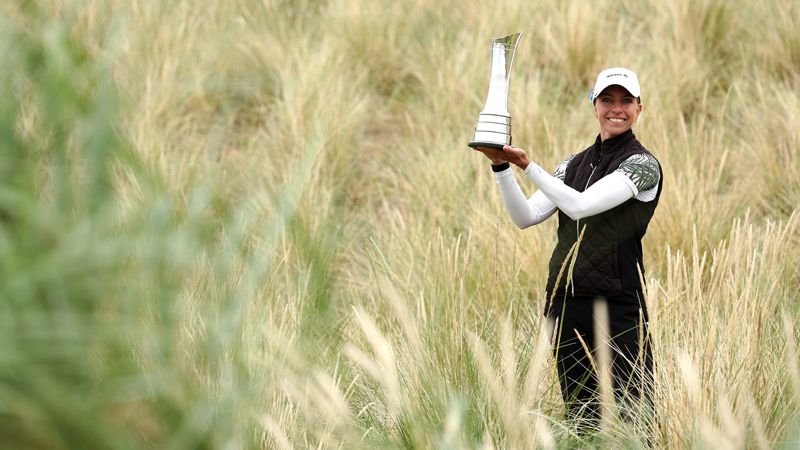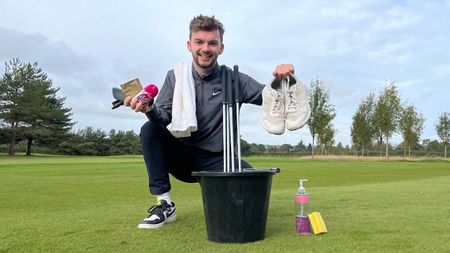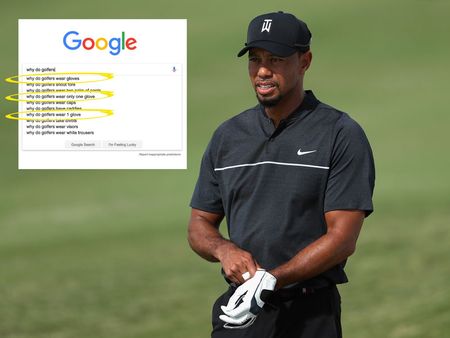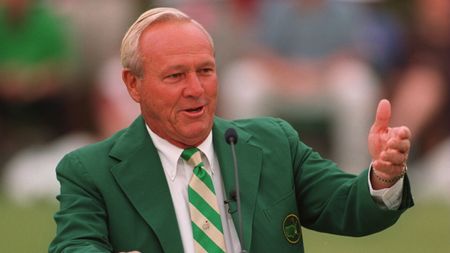Why Money Talks When It Comes To Growing The Women’s Game
Fergus Bisset on why bigger prize funds will lead to increased participation


Fergus Bisset explains why a bigger prize fund in the AIG Women’s Open will have a direct impact on the number of women and girls playing golf.
Why Money Talks When It Comes To Growing The Women’s Game
The announcement that this year’s AIG Women’s Open will carry a prize fund of $5.8 million is a big step on the road towards gender pay equality in top level golf.
It’s also hugely significant for growing the women’s game overall. Bigger prize funds will mean more interest in tournaments, and more women being inspired to hit the fairways.
In recent years, a strong effort has been made by golf’s governing bodies, home unions, golf clubs and grass roots organisations to encourage women and girls to take up the game of golf - The Women in Golf Charter and England Golf’s Get into Golf activities for example.
The qualities of the sport are extolled – the exercise, the social side of the game, the competition, skills gained and fresh air to be enjoyed.
These are important initiatives, but I reckon the numbers of women drawn into the game by them will be eclipsed by those enticed into watching and playing golf by increased prize funds in top-level events.
Get the Golf Monthly Newsletter
Subscribe to the Golf Monthly newsletter to stay up to date with all the latest tour news, equipment news, reviews, head-to-heads and buyer’s guides from our team of experienced experts.
With $5.8 million to be shared out amongst the competitors at Carnoustie this week, the AIG Women’s Open carries the largest purse in women’s golf.
The prize fund will increase by a further $1 million to $6.8 million for the 2022 AIG Women’s Open at Muirfield.
This is big news as golf’s governing bodies look to reduce the gender pay gap at the elite level of the sport.
The gap exists as, currently, there is a greater interest in men’s events because more men play the game and watch the top-level men’s action as live spectators and on TV.
More eyeballs mean greater opportunity for sponsors, which means more money, bigger purses, and more chance for tournaments to invest further and grow. It’s basic business and economics.
Through experience, the R&A is aware of how the level of prize money and interest in a tournament are inextricably linked.
Over recent years, under the guidance of Martin Slumbers, The Open Championship has advanced hugely from a commercial perspective – becoming a worldwide brand as well as an historic tournament.
By growing the status of, and global interest in The Open, sponsors, partners, TV and other media are prepared to pay more to be involved.
One way to grow that status and appeal is through increased prize money (a total of $11.5 million was on offer at Royal St George’s this July.)
Big prizes equal big interest.
A similar thing can happen with the AIG Women’s Open, and with other top-level women’s events for that matter.
We can be a bit coy in this country when it comes to talking cold hard cash – We’d like to think the prestige and honour of winning an event like the Women’s Open should be enough for those competing and watching.
It isn’t.
Professional golfers play to make a living – their agents, caddies, sponsors and coaches are all in it to make a living.
Money also appeals to the wider public, and the prospect of a huge pay day at the end of this week at Carnoustie, $870,000 goes to the winner, gets people’s attention.
The public takes notice of the high stakes on offer and is more inclined to tune in or turn up.
There then are the eyeballs we need to start the process – more sponsors become interested, and more money goes in, meaning prize funds and tournaments grow.
And alongside all of this, more girls and women will be taking notice of the increased fame and wealth being enjoyed by the top-level golfers.
Those girls and women will be inspired, just as they might be by celebrities in any field of sports or entertainment, and they’ll look to emulate them, playing and continuing to watch, encouraging friends and family members to do likewise.
Fame and wealth are appealing – simple as that.
The heightened “celebrity” would mean yet more eyeballs on elite women’s golf. More interest and thus more money – it’s a self-perpetuating cycle.
Big winner’s cheques in Women’s Majors will lead directly to increased female participation in golf and, as the R&A clearly recognises, they provide a quick route to achieving that objective.
Money talks.

Fergus is Golf Monthly's resident expert on the history of the game and has written extensively on that subject. He has also worked with Golf Monthly to produce a podcast series. Called 18 Majors: The Golf History Show it offers new and in-depth perspectives on some of the most important moments in golf's long history. You can find all the details about it here.
He is a golf obsessive and 1-handicapper. Growing up in the North East of Scotland, golf runs through his veins and his passion for the sport was bolstered during his time at St Andrews university studying history. He went on to earn a post graduate diploma from the London School of Journalism. Fergus has worked for Golf Monthly since 2004 and has written two books on the game; "Great Golf Debates" together with Jezz Ellwood of Golf Monthly and the history section of "The Ultimate Golf Book" together with Neil Tappin , also of Golf Monthly.
Fergus once shanked a ball from just over Granny Clark's Wynd on the 18th of the Old Course that struck the St Andrews Golf Club and rebounded into the Valley of Sin, from where he saved par. Who says there's no golfing god?
-
 PGA Tour Pro Wraps Up Masters Spot In Incredibly Tight Affair
PGA Tour Pro Wraps Up Masters Spot In Incredibly Tight AffairMichael Kim edged out Ben Griffin to qualify for The Masters via his world ranking following a tense battle between the pair in the Houston Open
By Mike Hall Published
-
 Gary Woodland Produces Best PGA Tour Finish Since Return From Brain Surgery
Gary Woodland Produces Best PGA Tour Finish Since Return From Brain SurgeryThe 2019 US Open champion had brain surgery to remove a benign tumor in 2023, with a T2 at the Texas Children's Houston Open his best finish since returning at the start of last year
By Mike Hall Published
-
 7 Most Annoying Golf Playing Partners
7 Most Annoying Golf Playing PartnersWe showcase the seven most annoying playing partners that golfers can have the misfortune of teeing it up with!
By Sam Tremlett Published
-
 How To Clean Golf Clubs And Grips
How To Clean Golf Clubs And GripsIf you want to know how to clean golf clubs and grips, check out this step-by-step guide
By Sam Tremlett Published
-
 In Praise Of Golfing In Winter
In Praise Of Golfing In WinterFergus Bisset on why he enjoys playing golf through the winter months
By Fergus Bisset Published
-
 'Why Do Golfers Only Wear One Glove?' You Asked Google And We've Got The Answer...
'Why Do Golfers Only Wear One Glove?' You Asked Google And We've Got The Answer...You asked Google and we've got the answer...
By Roderick Easdale Published
-
 How To Regrip Golf Clubs
How To Regrip Golf ClubsKnowing how to regrip golf clubs means you can afford to replace them as and when they need replacing
By Joe Ferguson Published
-
 The 7 Scariest Shots in Golf
The 7 Scariest Shots in GolfWith Halloween creeping up, we have selected the 7 scariest shots in golf
By Neil Tappin Published
-
 17 Ways To Tell You're Obsessed With Golf
17 Ways To Tell You're Obsessed With GolfThe tell-tale signs that you are a true golf fanatic
By Roderick Easdale Published
-
 10 Of The Best Arnold Palmer Quotes
10 Of The Best Arnold Palmer QuotesHere we take a look at 10 of our favourite Arnold Palmer quotes
By Roderick Easdale Published